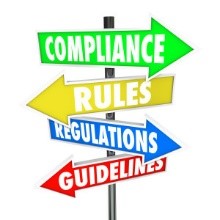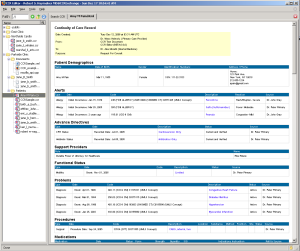 “What was that masked legislation? Why that, my boy was CMS! The greatest regulator in the west!” (Cue The March of the Swiss Soldiers in the William Tell Overture aka, theme song for one of my childhood heroes, The Lone Ranger).
“What was that masked legislation? Why that, my boy was CMS! The greatest regulator in the west!” (Cue The March of the Swiss Soldiers in the William Tell Overture aka, theme song for one of my childhood heroes, The Lone Ranger).
What is MACRA?
MACRA is the abbreviated version of the “Medicare Access and CHIP Reauthorization Act of 2015” which was signed by President Obama on April 16th of this year. (Healthcare and CMS sometimes really can’t help it’s communication to the public when they make these abbreviations something that only so called “healthcare insiders” will understand).
The new law repeals Medicare’s sustainable growth rate (SGR) formula and creates a way to increased Medicare payments. At HIMSS16 this year, there was a focus was on “MIPS” or Merit Based Incentive Payment System which is the program that the SGR will be replaced with.
Physician rates are understood to be increased by 0.5% starting in July and each January through 2019 and then, bonuses could reach 12% and then 27% by 2022 (physicians could also face penalties for not meeting quality targets down the road).
On the CMS site, it asks the question, “How does the Medicare Access & CHIP Reauthorization Act of 22015 (MACRA) reform Medicare payment?”
Apparently, in a couple of ways:
It makes 3 changes to how Medicare pays those who give care to Medicare beneficiaries. The changes create a Quality Payment Program (Abbreviated to ‘QPP’).
- Ending the SGR formula for determining Medicare payments for health care providers services.
- Making a new framework for rewarding heal care providers for giving better care not just more care.
- Combining CMS’ existing quality reporting programs into one system.
The changes have been named QPP and replace other Medicare reporting programs with a flexible system that allows providers to choose from 2 paths that link quality to payments either MIPS or something called Alternative Payment Models (APMs)
MIPS – This combines parts of the PQRS (Physician Quality Reporting System), the Value Modifier (VM or Value Based Payment Modifier) and the Medicare Electronic Health Record (EHR) incentive program in which EPs (Eligible Professionals) will be measured on:
- Quality
- Resource Use
- Clinical Practice Improvement
- Meaningful Use of Certified EHR technology.
APMs – Alternative Payment Models give new methods to pay healthcare providers for the care they give to Medicare recipients as from the year 2019 to 2024, CMS will pay some participating healthcare providers an incentive lump sum; increase transparency of physician focused payment models and starting in 2026, offer some participating healthcare providers higher annual payments.







